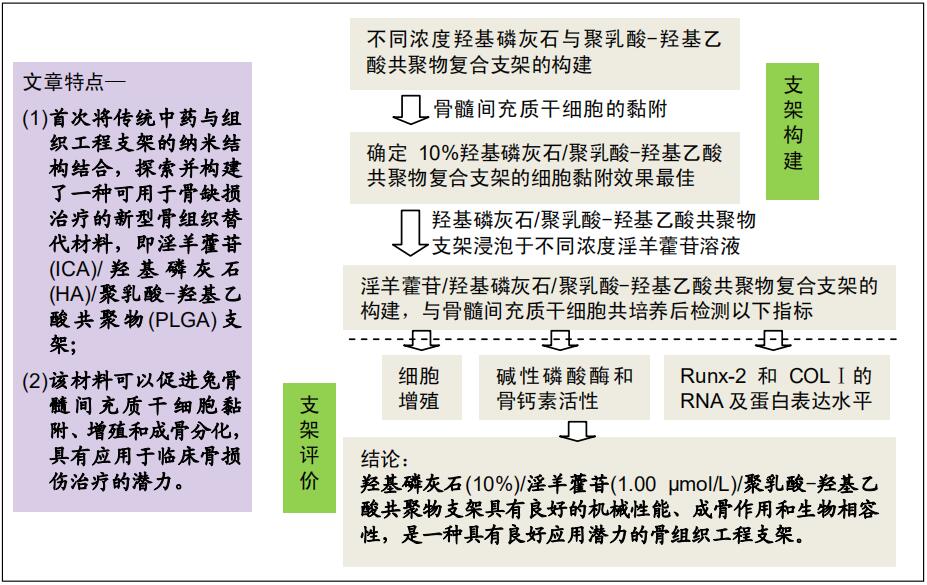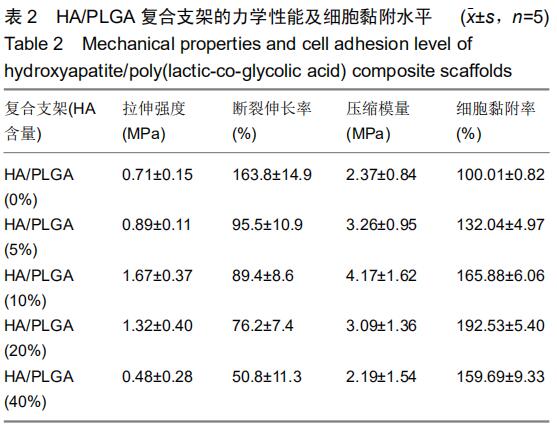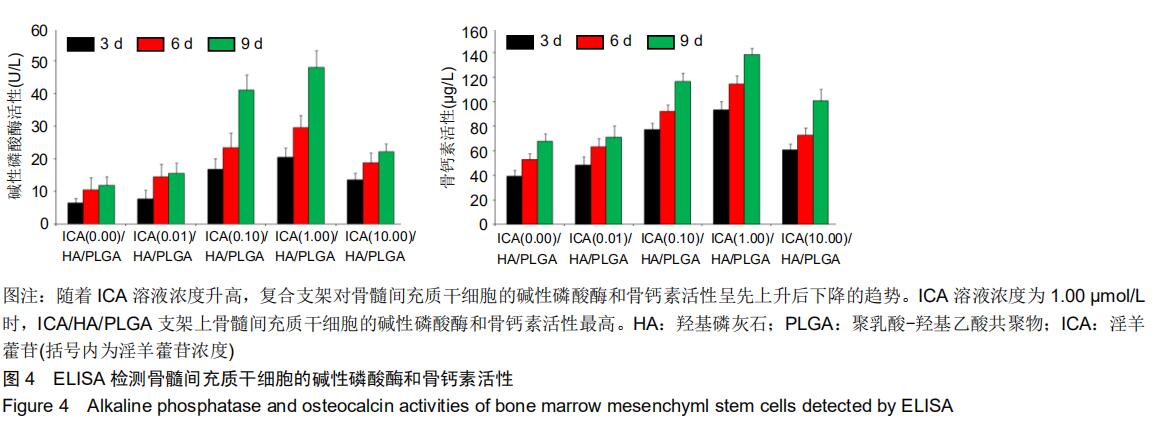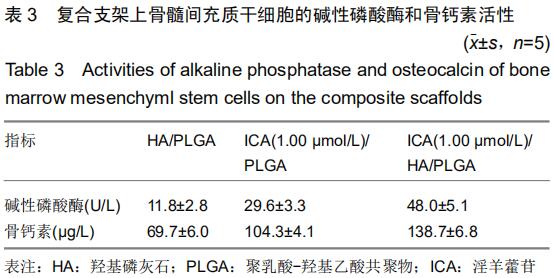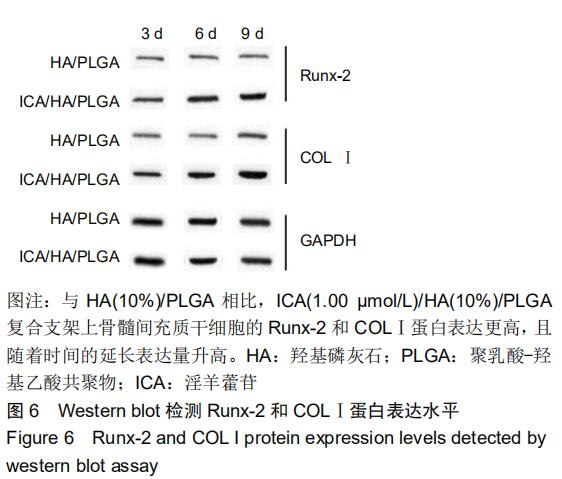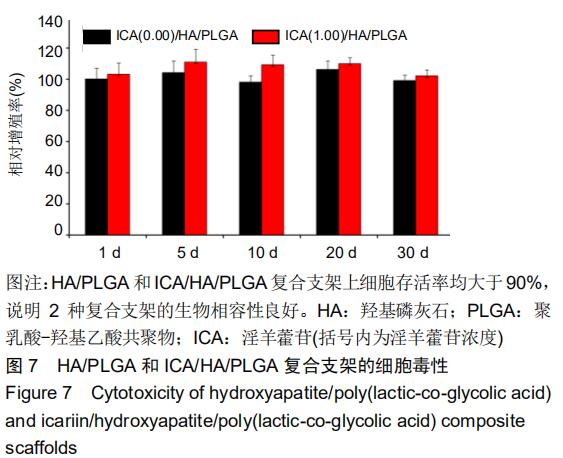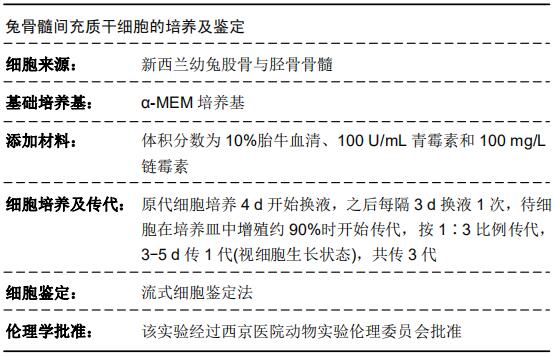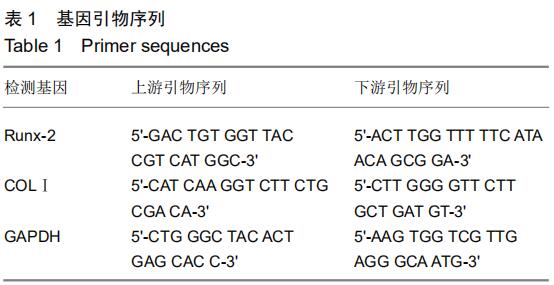|
[1] FERNANDEZ DE GRADO G, KELLER L, IDOUX-GILLET Y, et al. Bone substitutes: a review of their characteristics, clinical use, and perspectives for large bone defects management. J Tissue Eng. 2018;9:2041731418776819.
[2] MORELLI I, DRAGO L, GEORGE DA, et al. Managing large bone defects in children: a systematic review of the 'induced membrane technique'. J Pediatr Orthop B. 2018;27(5): 443-455.
[3] LESENSKY J, PRINCE DE. Distraction osteogenesis reconstruction of large segmental bone defects after primary tumor resection: pitfalls and benefits. Eur J Orthop Surg Traumatol. 2017;27(6):715-727.
[4] WANG S, ZHAO Z, YANG Y, et al. A high-strength mineralized collagen bone scaffold for large-sized cranial bone defect repair in sheep. Regen Biomater. 2018;5(5):283-292.
[5] CHU LY, JIANG GQ, HU XL, et al. Osteogenesis, vascularization and osseointegration of a bioactive multiphase macroporous scaffold in the treatment of large bone defects. J Mater Chem B. 2018; 6(25): 4197-4204.
[6] PEÑAFLOR T, CHAI Y, TAGAYA M. Hydroxyapatite Nanoparticle Coating on Polymer for Constructing Effective Biointeractive Interfaces. Journal of Nanomaterials.2019;(3): 1-23.
[7] SIDDIQUI HA, PICKERING KL, MUCALO MR. A Review on the Use of Hydroxyapatite-Carbonaceous Structure Composites in Bone Replacement Materials for Strengthening Purposes. Materials (Basel). 2018;11(10): E1813.
[8] JUN SH, LEE EJ, JANG TS, et al. Bone morphogenic protein-2 (BMP-2) loaded hybrid coating on porous hydroxyapatite scaffolds for bone tissue engineering. J Mater Sci Mater Med. 2013;24(3):773-782.
[9] CHEN B, NIU SP, WANG ZY, et al. Local administration of icariin contributes to peripheral nerve regeneration and functional recovery.Neural Regen Res. 2015;10(1):84-89.
[10] 谢利娜,刘艳辉,赵波,等.淫羊藿苷与BMP-2对体外培养成骨细胞增殖的影响[J].北京口腔医学,2018,26(6):319-322.
[11] LAI Y, CAO H, WANG X, et al. Porous composite scaffold incorporating osteogenic phytomolecule icariin for promoting skeletal regeneration in challenging osteonecrotic bone in rabbits. Biomaterials. 2018;153:1-13.
[12] 石永新,逄增金,羊明智,等. 3D打印技术制备聚磷酸钙/淫羊藿苷骨支架诱导骨髓间充质干细胞成骨分化治疗骨缺损[J].中国组织工程研究,2019,23(21):3309-3315.
[13] 管明强,朱志霞,周观明.淫羊藿苷对聚乳酸/纳米羟基磷灰石支架上成骨细胞增殖与分化的影响[J].包头医学院学报,2018,34(1): 92-94.
[14] 孔金海. PLLA/PLGA/HA复合材料的制备与评价[D].长沙:中南大学, 2009.
[15] RÓDENAS-ROCHINA J, RIBELLES JL, LEBOURG M. Comparative study of PCL-HAp and PCL-bioglass composite scaffolds for bone tissue engineering. J Mater Sci Mater Med. 2013;24(5):1293-1308.
[16] ROSETI L, PARISI V, PETRETTA M, et al. Scaffolds for Bone Tissue Engineering: State of the art and new perspectives. Mater Sci Eng C Mater Biol Appl. 2017;78:1246-1262.
[17] ZHAO W, LI J, JIN K, et al. Fabrication of functional PLGA-based electrospun scaffolds and their applications in biomedical engineering. Mater Sci Eng C Mater Biol Appl. 2016;59:1181-1194.
[18] DEL CASTILLO-SANTAELLA T, ORTEGA-OLLER I, PADIAL-MOLINA M, et al. Formulation, Colloidal Characterization, and In Vitro Biological Effect of BMP-2 Loaded PLGA Nanoparticles for Bone Regeneration. Pharmaceutics. 2019;11(8): E388.
[19] MARTINS C, SOUSA F, ARAÚJO F, et al. Functionalizing PLGA and PLGA Derivatives for Drug Delivery and Tissue Regeneration Applications. Adv Healthc Mater. 2018;7(1): UNSP 1701035.
[20] ZHAO X, HAN Y, LI J, et al. BMP-2 immobilized PLGA/hydroxyapatite fibrous scaffold via polydopamine stimulates osteoblast growth. Mater Sci Eng C Mater Biol Appl. 2017;78:658-666.
[21] HAIDER A, HAIDER S, HAN SS, et al. Recent advances in the synthesis, functionalization and biomedical applications of hydroxyapatite: a review. RSC Adv. 2017; 7(13): 7442-7458.
[22] ZHENG S, GUAN YH, YU HC, et al. Poly-L-lysine-coated PLGA/poly(amino acid)-modified hydroxyapatite porous scaffolds as efficient tissue engineering scaffolds for cell adhesion, proliferation, and differentiatio. New J Chem. 2019; 43(25): 9989-10002.
[23] 王帅,张霄雁,李哲海.骨髓间充质干细胞成骨细胞分化研究进展[J].医学综述,2015,21(12):2137-2139.
[24] XU H, GE YW, LU JW, et al. Icariin loaded-hollow bioglass/chitosan therapeutic scaffolds promote osteogenic differentiationand bone regeneration. Chem Eng J. 2018; 354: 285-294.
[25] WANG Z, WANG D, YANG D, et al. The effect of icariin on bone metabolism and its potential clinical application. Osteoporosis Int. 2018;29(3):535-544.
[26] FU N, DONG TZ, MENG A, et al. Research progress of the types and preparation techniques of scaffold materials in cartilage tissue engineering. Curr Stem Cell Res Ther. 2018; 13(7): 583-590.
[27] XIE YL, SUN WC, YAN FF, et al. Icariin-loaded porous scaffolds for bone regeneration through the regulation of the coupling process of osteogenesis and osteoclastic activity. Int J Nanomed. 2019; 14: 6019-6033.
[28] LUO Y, ZHANG YD, MIU GJ, et al. Icariin promotes osteoblast differentiation and inhibits adipogenesis of bone marrow stem cells through activation of Wnt/beta-catenin signaling in vivo and in vitro. Pharmazie.2018;73(8):459-464.
[29] ARIFFIN SHZ, MANOGARAN T, ABIDIN IZZ, et al. A perspective on stem cells as biological systems that produce differentiated osteoblasts and odontoblasts. Curr Stem Cell Res Ther. 2017; 12(3): 247-259.
[30] 郭晓宇. PI3K/AKT-eNOS介导淫羊藿苷促进骨髓基质细胞和成骨细胞的成骨性分化研究[D].甘肃:甘肃农业大学, 2013.
|
